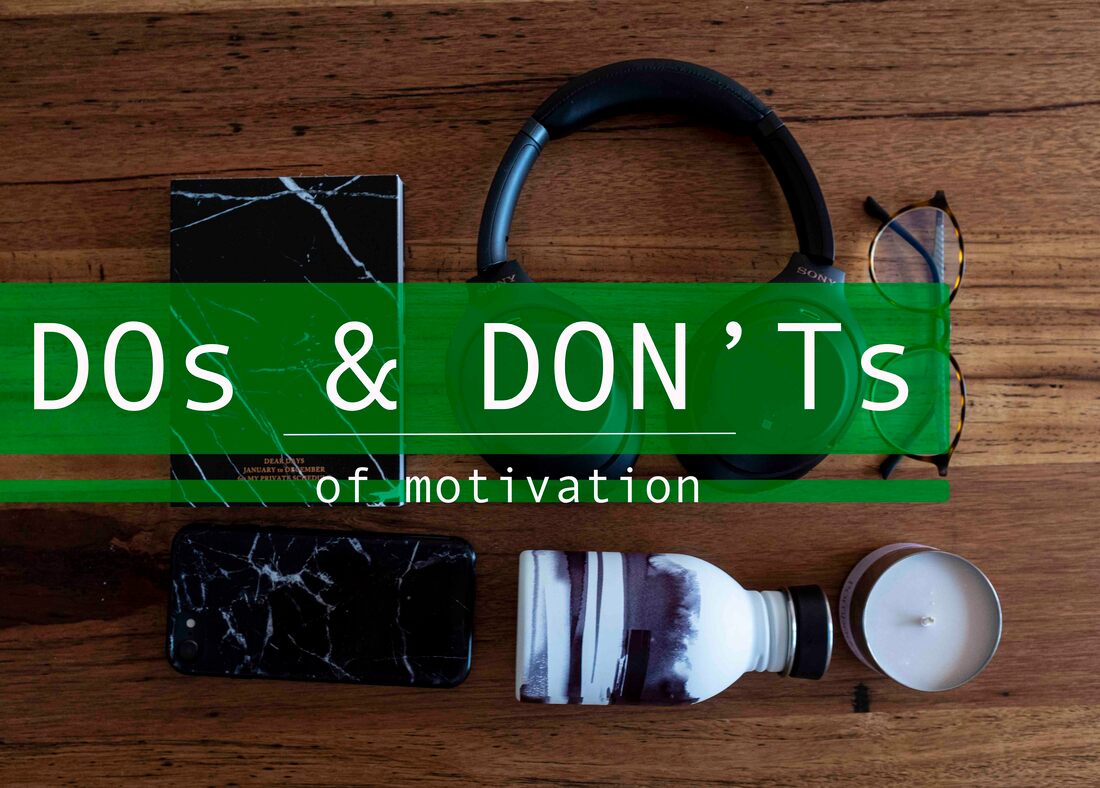|
Lets me ask you a question..Have you ever hung up on the telemarketer? Flipped the channel on your remote to escape a meaningless ad? Businesses want to make money, even if it meant interrupting a family dinner or favourite TV program. BUT lets get honest, people are highly annoyed with the way brands continue to blast generic advertising messages repeatedly.
Research indicates that 63% of online customers consider a lack of personalisation to be a hindrance, and will switch brands if they fail to provide a one-to-one customer experience. The necessity to drive personalisation strategies to take advantage of API integrations and automation is now as important as ever. By focusing on what is most relevant to the customer, there is a higher chance of them making a purchase. What is Personalised Marketing? Personalised marketing is a data-driven, targeted marketing technique that helps to build relationships with your customers on an personal level. It can be used across campaigns, email, social media, or even direct mail activities. There are three main categories of personalisation: behavioral, contextual and demographic: Behavioral personalisation:
So, what next? Here are some easy tips when building your company's personalisation strategy: Big data Gather information about your customers through website visits, social media engagement, email interactions, and the like. The better you can understand who they are, the easier it’ll be to connect with them. Whos who Once you have the facts, it's critical to segment your customers into segments (groups) based on shared characteristics including demographic information including age, location, behavior, interests. For example, if you are a travel company, you might want to consider behavioral based segments such as soul searcher, foodie or adventurer. Content is key Be strategic and develop a plan for your content. Think about the entire funnel — top, middle, and bottom — when you create and assign your content. Having a break down of your customer personas can be useful during this step to guide your content and better understand the variety of consumer experiences with your company. More than a name Customers respond to brands that add a personal, human touch when interacting with them. For example you can incorporate dynamic content in your email campaigns, subscribers can receive offers uniquely tailored to their demographics and behavior. Build smart processes CRM is the hub of customer information, your personalisation strategy should span every device and channel, and your CRM should reflect anything you’ve learned about your customer along the way. Although, personalised marketing can be viewed as time-consuming, it’s well worth the effort to grow your business. What initiatives have you taken to delight your customers experiences? We would love to know, comment below or contact us for a consultation with one of specialists here.
0 Comments
Every business whether small or large has a story to tell, for instance Nike has always surpassed at brand storytelling especially when launching their marketing campaigns and that is one of the reasons they continue to be a profitable business today.
So, what is brand storytelling and why is it so important? Your story begins with the connection made when the customer hears your name for the first time, it sets the stage for every interaction with your brand online for instance when they see your logo, visits your website, reads "about" page and experiences your interactions on social media also don't forget instore. A brand story isn’t just for larger businesses, great brand stories allow smaller businesses to attract new customers, even without a big marketing budget. A brand story is not just a catchy tagline. It’s about building something that people care about and want to buy into. It’s about thinking beyond the utility and and striving for the creation of loyalty with your customers. Think of a brand story as a complete picture made up of facts, feelings and interpretations, which means that likely you are already halfway through your story. Now that you have a better idea of how to build a brand story, it’s time to get started creating your own. Here are some tips to create your compelling brand story: Be authentic: A big part of making sure your brand story is seen as authentic and consistent. An honest story of someone going through the struggles of starting a business can be a great way to connect with your audience. Your origin story can really connect a human face and story to a brand. Be relatable: When your story connects with the target customer, you build trust. Tell your story in such a way that it tells your customers we relate to you, we understand you, we are like you. Make it memorable: Memorable brand stories tell the unexpected and strike an emotional chord. Remember to communicate your values and what you stand truly stand for. Keep it simple: Don’t try to say too much. It’s far better to tell a very simple story and maximize emotional attachment than overwhelm people with different stories. Focus on one person or one problem at a time so you don’t confuse or distract your reader. Stay consistent: It’s important to ensure that your brand is aligned to your story. Review your brand assets and content to consolidate your brand around the story as it needs to be consistently told. We’d love to hear from you and share how we can help your company create or refine your brand story. Speak to the team here Author: Amanda Sandhu
We often come across clients at the very beginning of their journey of starting a small business or finally taking the plunge on that side-hustle. They have done their research and downloaded a “checklist” online and begin making their way through that list to make their dream business a reality. Suddenly, they come to a halt as they realise that they have neglected branding. Unfortunately, there are no shortcuts and slapping together a couple ideas and a logo is not a branding. Branding is a marketing practice whereby you create a name, symbol or design that helps identify your brand as belonging to a company. There are many elements that are used to develop a brand such as logo, colours, advertising and that’s just naming a few. All these elements work together to create one unique and appealing professional profile. Choosing your business brand colors is an important part of the journey that makes up your overall brand identity. Different colors have different psychological effects on consumers, they can help your business establish trust, familiarity and provoke emotions. A good example of how a colour can provoke a certain emotion is pink, usually pink represents love, warmth and nurture. Keep in mind that you must choose your branding colors carefully as they’ll have a influence on your brand and although pink may be pretty and is your personal favorite color, it might not necessary be the right fit with your business brand. Below is an overview of what differentiates each colour and some examples which might help you get started when choosing for your business:
So what next? Once you have an idea of your branding we recommend that you develop a brand guideline. This is a book of rules as to how your brand should look and ensure consistency. Additional items you can add into your brand guidelines include:
Do the brand color choices you’ve selected for your brand align with the feeling you’re trying to give to your customers? I’d love to hear about why you selected the colors you did for your brand in the comments. If you need any assistance with your branding or creation of a brand guideline please contact us here. As a small business we tend to focus on building and marketing our company brand. However, did you know that it is just as important to promote your own personal brand and this is even more crucial for small businesses, entrepreneurs and those who are in-between kick starting a side hustle. So, on this topic of personal brand, Little Steps Digital is excited to announce a partnership with Johnathan Maltby, Personal Branding and Career Consultant. As part of our partnership, Johnathan will be providing valuable insights on personal brand strategy, he is also offering some great personal branding services including one-on-one and business consulting also workshops. We look forward to collaborating and hosting some webinars for you.
|
| Let’s just say that 2020 has been a year no one could have seen coming, and at the time of writing it continues to throw us curve balls! Small businesses as you know have been at the frontline in the trenches and taking every day as it comes. This means that it can be hard to focus on things like marketing, but if you are able to take that little bit of time each day on marketing, over time it will pay dividends. I have compiled some tips and tricks for those of us who are working from home and in need of a little inspiration to liven up their social media channels. |
1. Firstly, how to get inspired?
So, first things first, inspiration. Treat inspiration like redecorating your house. Ask, what are your options? This can be done like an interior decorator does when putting together an inspiration-board which has all the different materials, samples and breathtaking images.
You can create an inspiration-board for your social media channels. Creating an inspiration board is easy, you can start by writing down all your ideas, cutting out clever ideas from magazines or saving images from Pinterest.
Once you have the general vibe of what you want, make an action list for the concepts you think could make great content and before hitting the post button, it’s a good idea to review your content before posting immediately and ask the questions “What do I want to achieve from posting on Social Media?” “What are my company values?” “How do I want to be perceived?”
2. Enough of that, it’s time to make a real mess!
After you have your inspiration-board ready, it’s time to get creative. If you are working with a physical product, why not set up your own photo shoot. Look around your house and rummage through those old boxes, there are sure to be some good props around the house. If you are struggling, your garden or local park could also be a treasure trove of leaves, flowers, seeds and fallen branches or pebbles. Once you have some props which match the vibe from your inspiration board, try to think how you can set up your product and treat it like a small photoshoot. You need to consider the lightning and the background—and always think outside the box, you will be surprised by your results! I try to use natural light where possible and time your shoot around it.
Here is an example I like by an Australian jewellery brand called Kristin Ash (https://www.instagram.com/p/CDNPdd2JxcR/), they have some very impressive posts to get you inspired for your own shoot using props like magazines, trinkets, plants, or a piece of fruit.
Another cool idea is to take advantage of any interesting materials in your house, use natural materials/objects/things you have in your house to showcase your product (timber table, marble counter top, plants, veggies, fruits, chopping boards, any type of stones or linen). Here is a great example using your kitchen counter top: https://www.instagram.com/p/CCfbFXapd-5
Be sure to also keep abreast of the latest trends, 2020 is the ‘golden year’ despite the pandemic, so don’t hold back. Anything you have in your house that is gold looking, for example, use your gold / brass side table as a stand, work with what you have and play with your house and use it to help your products look even better.
And, if all else fails you can simply hold your product in your hands, and don’t forget to take care of them before you shoot, wear a nice ring, bracelet and maybe that nail polish you always wanted—now you have the perfect excuse!
3. Shoot your product and touch it up
Once you decided what you want to shoot, where you’re going to shoot it, it’s time to think about how. You don’t need a fancy camera to produce good content on Social Media, you can easily shoot with your phone, but remember, don’t zoom! It’s always better to move closer (zoom results in a lower resolution image) and then if it needs cropping, this can easily be done in your phone or computer.
Also, be creative when it comes to taking a picture of your product or even if it’s a normal inspirational post, try to use different angles (lie down to the floor, take a picture from above, use an interesting corner, or reflection etc), the less postprocessing the better.
4. Make a habit of it
Once you have done your first shoot, keep your inspiration-board ready and don’t be afraid to mix it up to keep things fresh, but with all things it’s best to make this a habit. Maybe allocate some time each week and keep up with your content creation (even from home!).
Also, even when everything returns to normal, keep up your routine and continue creating your own content, it is a great time to be creative, and see things from a different point of view - never underestimate the power of creativity, it is in everything we do.
Let your mind go and remember never think you can’t do it; you just need the right motivation to get you started.
So, first things first, inspiration. Treat inspiration like redecorating your house. Ask, what are your options? This can be done like an interior decorator does when putting together an inspiration-board which has all the different materials, samples and breathtaking images.
You can create an inspiration-board for your social media channels. Creating an inspiration board is easy, you can start by writing down all your ideas, cutting out clever ideas from magazines or saving images from Pinterest.
Once you have the general vibe of what you want, make an action list for the concepts you think could make great content and before hitting the post button, it’s a good idea to review your content before posting immediately and ask the questions “What do I want to achieve from posting on Social Media?” “What are my company values?” “How do I want to be perceived?”
2. Enough of that, it’s time to make a real mess!
After you have your inspiration-board ready, it’s time to get creative. If you are working with a physical product, why not set up your own photo shoot. Look around your house and rummage through those old boxes, there are sure to be some good props around the house. If you are struggling, your garden or local park could also be a treasure trove of leaves, flowers, seeds and fallen branches or pebbles. Once you have some props which match the vibe from your inspiration board, try to think how you can set up your product and treat it like a small photoshoot. You need to consider the lightning and the background—and always think outside the box, you will be surprised by your results! I try to use natural light where possible and time your shoot around it.
Here is an example I like by an Australian jewellery brand called Kristin Ash (https://www.instagram.com/p/CDNPdd2JxcR/), they have some very impressive posts to get you inspired for your own shoot using props like magazines, trinkets, plants, or a piece of fruit.
Another cool idea is to take advantage of any interesting materials in your house, use natural materials/objects/things you have in your house to showcase your product (timber table, marble counter top, plants, veggies, fruits, chopping boards, any type of stones or linen). Here is a great example using your kitchen counter top: https://www.instagram.com/p/CCfbFXapd-5
Be sure to also keep abreast of the latest trends, 2020 is the ‘golden year’ despite the pandemic, so don’t hold back. Anything you have in your house that is gold looking, for example, use your gold / brass side table as a stand, work with what you have and play with your house and use it to help your products look even better.
And, if all else fails you can simply hold your product in your hands, and don’t forget to take care of them before you shoot, wear a nice ring, bracelet and maybe that nail polish you always wanted—now you have the perfect excuse!
3. Shoot your product and touch it up
Once you decided what you want to shoot, where you’re going to shoot it, it’s time to think about how. You don’t need a fancy camera to produce good content on Social Media, you can easily shoot with your phone, but remember, don’t zoom! It’s always better to move closer (zoom results in a lower resolution image) and then if it needs cropping, this can easily be done in your phone or computer.
Also, be creative when it comes to taking a picture of your product or even if it’s a normal inspirational post, try to use different angles (lie down to the floor, take a picture from above, use an interesting corner, or reflection etc), the less postprocessing the better.
4. Make a habit of it
Once you have done your first shoot, keep your inspiration-board ready and don’t be afraid to mix it up to keep things fresh, but with all things it’s best to make this a habit. Maybe allocate some time each week and keep up with your content creation (even from home!).
Also, even when everything returns to normal, keep up your routine and continue creating your own content, it is a great time to be creative, and see things from a different point of view - never underestimate the power of creativity, it is in everything we do.
Let your mind go and remember never think you can’t do it; you just need the right motivation to get you started.
Small business tips & tricks
Author: Beatrice Pipero
Author: Beatrice Pipero
| When getting new staff shots done to update your website and social media channels, a professional photographer with a solid portfolio is the obviously best. However, this can be out of reach for small businesses with limited budgets. Hiring a professional photographer can be expensive, especially as your team will likely grow or even shrink over time and getting a photographer regularly could end up rather costly. Well, what to do then, well obviously DIY! Warning: Same as with DIY renovations—if not done correctly the results could be catastrophic, but for your brand identity and credibility rather than your house—so do your research before dusting off your camera gear! |
So, what should you do? Let’s break down the process step by step:
1. Don’t panic, you’ve got this
Let’s be realistic, you won’t become a photographer in one day. Firstly, select someone from your team or even yourself to take on this job. The most creative person would be the best pick, but even without a creative bone in your body, with some basic techniques, you can still achieve great results.
2. Find the perfect venue
Scouting out the perfect location doesn’t have to be overly complicated, just start by writing down some nice areas or backdrops you like near the office, such as a funky brick wall or a nice coffee shop with a trendy lounge area, or even just a well-lit wall or a corner of your office with some nice plants.
Selecting a good location is crucial but other factors also need to be considered relating to location; say you decide to get the shots from your office terrace, then you need to first find out the weather forecast, the best time of day, and if at that trendy café, when is the best time to not get in the way of other people? Before work or during the lunch rush probably isn’t a great idea—and be sure to ask permission first.
One last thing to think about with venue is consistency (check out Cummins & Partners Instagram page). Do you want all the images to match? This will create a strong image and constancy, and will require going back to the same spot each time you hire a new member.
On the other hand, you could go to the complete opposite and mix it up, going for something personal to each team member. Perhaps they would like to select a spot to reflect themselves and the work they do? This is trickier, but can still been consistent if you take the images in the same style and use the same lighting.
3. Light, light & more light
Light is essential, even the best location can be ruined with bad lighting. For a good headshot, it is key to favour neutral light, but if your team member is struggling to see, then the light is too harsh (check out Etsy Australia ‘Our Team’ page). Strong light will also wash out their expression and detail. On the other hand, using a very dark location won’t make it easy to get high quality photos, especially if you don’t have experience using lighting. To sum up strong lights and darks are great for moody artistic shots but not for the vast majority of companies.
4. Choosing the right equipment
Yes, you can use your phone. Nowadays mobile phones cameras take high quality photographs, so if you don’t have the latest 1000-megapixel full frame monster, your phone will be sufficient, but if at all possible use a tripod for stability.
If you have a camera like a good point and shoot or even better a DSLR but lack the skills to fully utilise it, the automatic mode can suffice. With a few tweaks once you have uploaded the images to your computer the images should look great. There are always plenty of videos online to help, just type the make and model number of your camera into YouTube and hey presto!
For post processing your images, ideally you will have someone in the office who is a whiz at Photoshop, Lightroom or any number of free alternatives. But if not, again don’t worry you can simply click on any image in your computer and select the modify button and make some minor adjustments. This can also be done in most cameras, but the small screen can be rather deceptive.
And, most importantly, any modifications you make to one image should be carried across all the photos for consistency—while practicing some restraint, please no crazy filters and nothing Instagrammy.
5. Give your employees some tips on potential outfits
Unless your office has a uniform, outfits will likely differ widely, but you can always recommend that everyone wear either a white or black shirt. Again, this is best discussed with your staff and you can come to an agreement. Not only is it best to involve your staff, but please let them know in advance and also shoot out a quick friendly reminder the day before, no one wants to suddenly realise they are getting their photo taken and haven’t had any time to prepare.
The idea behind keeping the outfits consistent is to get your team’s individual personality to be the star of the show, but in pursuit of creating a strong and professional brand identity there must still be flexibility and room for the team to represent themselves. Also, be sure to let them check the photos you are taking during the shoot, always take more than you need, and again show them the final product and get their consent before publishing online. Respect any staff who do not wish to have their photo published.
6. Visualise the photo before you take it
When taking the shots, visualise before you take the photos, imagine you are a film director holding out your thumbs and index fingers to frame the perfect shot. This is a surprisingly effective technique even if done only mentally.
A few more tips before we finish up, during the shoot, don’t be afraid to pose your subject, ask them to look left, right or adjust a stray clump or hair or who knows, even a piece of lunch lodged in their teeth. Also, if the subject is taller or shorter than you, try and crouch down a little or even stand on a little stool to get them face on, and do your best to get them relaxed, this may involve turning the radio up, making small talk or a light-hearted joke.
7. Have fun!
Finally, have fun. Make the person laugh as it will break the ice for sure (UAP did a great job!). Capture all the smiles, it will help a lot if the person feels comfortable with the environment and the person who is taking the shots. The camera will capture the mood.
In the end there is no right or wrong way, but do your research, and check look for some examples for inspiration. Here are some I’ve prepared earlier from a range of Melbourne companies to get your creative juices flowing.
1. Don’t panic, you’ve got this
Let’s be realistic, you won’t become a photographer in one day. Firstly, select someone from your team or even yourself to take on this job. The most creative person would be the best pick, but even without a creative bone in your body, with some basic techniques, you can still achieve great results.
2. Find the perfect venue
Scouting out the perfect location doesn’t have to be overly complicated, just start by writing down some nice areas or backdrops you like near the office, such as a funky brick wall or a nice coffee shop with a trendy lounge area, or even just a well-lit wall or a corner of your office with some nice plants.
Selecting a good location is crucial but other factors also need to be considered relating to location; say you decide to get the shots from your office terrace, then you need to first find out the weather forecast, the best time of day, and if at that trendy café, when is the best time to not get in the way of other people? Before work or during the lunch rush probably isn’t a great idea—and be sure to ask permission first.
One last thing to think about with venue is consistency (check out Cummins & Partners Instagram page). Do you want all the images to match? This will create a strong image and constancy, and will require going back to the same spot each time you hire a new member.
On the other hand, you could go to the complete opposite and mix it up, going for something personal to each team member. Perhaps they would like to select a spot to reflect themselves and the work they do? This is trickier, but can still been consistent if you take the images in the same style and use the same lighting.
3. Light, light & more light
Light is essential, even the best location can be ruined with bad lighting. For a good headshot, it is key to favour neutral light, but if your team member is struggling to see, then the light is too harsh (check out Etsy Australia ‘Our Team’ page). Strong light will also wash out their expression and detail. On the other hand, using a very dark location won’t make it easy to get high quality photos, especially if you don’t have experience using lighting. To sum up strong lights and darks are great for moody artistic shots but not for the vast majority of companies.
4. Choosing the right equipment
Yes, you can use your phone. Nowadays mobile phones cameras take high quality photographs, so if you don’t have the latest 1000-megapixel full frame monster, your phone will be sufficient, but if at all possible use a tripod for stability.
If you have a camera like a good point and shoot or even better a DSLR but lack the skills to fully utilise it, the automatic mode can suffice. With a few tweaks once you have uploaded the images to your computer the images should look great. There are always plenty of videos online to help, just type the make and model number of your camera into YouTube and hey presto!
For post processing your images, ideally you will have someone in the office who is a whiz at Photoshop, Lightroom or any number of free alternatives. But if not, again don’t worry you can simply click on any image in your computer and select the modify button and make some minor adjustments. This can also be done in most cameras, but the small screen can be rather deceptive.
And, most importantly, any modifications you make to one image should be carried across all the photos for consistency—while practicing some restraint, please no crazy filters and nothing Instagrammy.
5. Give your employees some tips on potential outfits
Unless your office has a uniform, outfits will likely differ widely, but you can always recommend that everyone wear either a white or black shirt. Again, this is best discussed with your staff and you can come to an agreement. Not only is it best to involve your staff, but please let them know in advance and also shoot out a quick friendly reminder the day before, no one wants to suddenly realise they are getting their photo taken and haven’t had any time to prepare.
The idea behind keeping the outfits consistent is to get your team’s individual personality to be the star of the show, but in pursuit of creating a strong and professional brand identity there must still be flexibility and room for the team to represent themselves. Also, be sure to let them check the photos you are taking during the shoot, always take more than you need, and again show them the final product and get their consent before publishing online. Respect any staff who do not wish to have their photo published.
6. Visualise the photo before you take it
When taking the shots, visualise before you take the photos, imagine you are a film director holding out your thumbs and index fingers to frame the perfect shot. This is a surprisingly effective technique even if done only mentally.
A few more tips before we finish up, during the shoot, don’t be afraid to pose your subject, ask them to look left, right or adjust a stray clump or hair or who knows, even a piece of lunch lodged in their teeth. Also, if the subject is taller or shorter than you, try and crouch down a little or even stand on a little stool to get them face on, and do your best to get them relaxed, this may involve turning the radio up, making small talk or a light-hearted joke.
7. Have fun!
Finally, have fun. Make the person laugh as it will break the ice for sure (UAP did a great job!). Capture all the smiles, it will help a lot if the person feels comfortable with the environment and the person who is taking the shots. The camera will capture the mood.
In the end there is no right or wrong way, but do your research, and check look for some examples for inspiration. Here are some I’ve prepared earlier from a range of Melbourne companies to get your creative juices flowing.
| Author: Beatrice Pipero 1) Choose a colour palette Many times we underestimate the power of colour. When you decide to start a social media page for your company, you have to keep in mind that it is really important to choose three main colours to use throughout your posts. This is the perfect way to step-up your social media game and elevate your page visually and your costumer will better gauge the “vibe” of your brand. |
*Key tip: use the main colour from your logo as the primary colour. For the gold standard check out Coca Cola (https://www.instagram.com/cocacola/?hl=en) with their instantly recognisable trademark palette of red and white - aim high!
2) Post your content at least 3 times a week
Consistency is key. Set certain days and times when posting content, and stick to it.
You need to be in your clients consciousness by keeping them abreast of all the cool stuff you have in store or are doing. On the other hand, over killing your feed with too many posts can cause the opposite effect and overwhelm prospective customers. Balance how many times you want to post, create a schedule and keep a good variety of topics you want to share, and you will notice the improvement in your page in the long run.
3) Be original & keep it simple
Wherever possible, try not to use stock images. Be original, take your own pictures, have fun with it, be creative and it will pay off big time.
The content should make your brand personal, relatable and trustworthy. This can be done by taking a snap from time to time in your office including of your team, highlighting events your company is participating in or whatever cool things your company is doing and posting it. Your clients want to feel a connection and nothing is better than show them who you are, what you stand for and the faces behind the brand.
4) Interact with your audience/clients
Something to keep in mind is the importance of customer service. Be there for your customer, interact with them, not only on your website, but also on your social media pages as well. Nothing looks worse than clients comments going unanswered or answered in a rude and surly manner.
Another way to engage and top-up your content is to tag and re-post content from your clients which will make them feel important.
5) Giveaways are the right way
Finally, giveaways are a really good way for your business to showcase their product and boost short-term interest. Perhaps, create a multichannel campaign and giveaway some freebies! The giveaways need to have a significant enough value for people to engage, but the engagement and the hype if managed well can supercharge your business in the short-term.
Again, consistency is key, and you don't want interest to wane; every three months could be a good place to start, or align with appropriate holidays where spending is higher to multiply the effect of your hard work (Christmas sales, Boxing day, Cyber Monday, Easter holidays, Mother’s day..)
2) Post your content at least 3 times a week
Consistency is key. Set certain days and times when posting content, and stick to it.
You need to be in your clients consciousness by keeping them abreast of all the cool stuff you have in store or are doing. On the other hand, over killing your feed with too many posts can cause the opposite effect and overwhelm prospective customers. Balance how many times you want to post, create a schedule and keep a good variety of topics you want to share, and you will notice the improvement in your page in the long run.
3) Be original & keep it simple
Wherever possible, try not to use stock images. Be original, take your own pictures, have fun with it, be creative and it will pay off big time.
The content should make your brand personal, relatable and trustworthy. This can be done by taking a snap from time to time in your office including of your team, highlighting events your company is participating in or whatever cool things your company is doing and posting it. Your clients want to feel a connection and nothing is better than show them who you are, what you stand for and the faces behind the brand.
4) Interact with your audience/clients
Something to keep in mind is the importance of customer service. Be there for your customer, interact with them, not only on your website, but also on your social media pages as well. Nothing looks worse than clients comments going unanswered or answered in a rude and surly manner.
Another way to engage and top-up your content is to tag and re-post content from your clients which will make them feel important.
5) Giveaways are the right way
Finally, giveaways are a really good way for your business to showcase their product and boost short-term interest. Perhaps, create a multichannel campaign and giveaway some freebies! The giveaways need to have a significant enough value for people to engage, but the engagement and the hype if managed well can supercharge your business in the short-term.
Again, consistency is key, and you don't want interest to wane; every three months could be a good place to start, or align with appropriate holidays where spending is higher to multiply the effect of your hard work (Christmas sales, Boxing day, Cyber Monday, Easter holidays, Mother’s day..)
| As a small business you have collected the much-needed monies and finally have some budget that can be used towards marketing, what now? Many of you will be faced with a dilemma in deciding which kind of marketing activities to do, whether it is traditional or digital marketing methods and questioning which is better for your business. |
We are not going to lie, it can all be quite puzzling and confusing deciding whether traditional or digital marketing is better for your business. We have clients that are excited to embrace the digital marketing landscape, however there are still many small businesses that will stick to traditional methods only and the main reasons is the perception that digital marketing is “overly complicated” and “too technical” for me.
So, how do you distinguish between the two and know where to spend your budget when it comes to digital marketing vs traditional marketing? To be honest, the debate between traditional and digital marketing has been a lengthy and continuing one.
If we were to go back to basics, the use of newspapers and magazine print ads are a simple example of traditional marketing, alternatively flyers, brochures, radio or TV commercials are also common forms of traditional marketing. On the other hand, digital marketing includes building a website, Google advertising, social media advertising such as Linkedin, Facebook, Twitter and YouTube. The major difference between traditional and digital marketing is that digital marketing looks to provide value by using content marketing and other solutions. Traditional marketing is typically looking to increase sales with ad spots, not to necessarily provide added value.
The reality is that you cannot just depend on outdated marketing methods anymore. If you are seeking the answer to which one is better, it ultimately comes down to which one aligns with the needs of your business. Below we discover key points of traditional and digital marketing to help you decide which would work best for your business.
Digital Marketing:
Cost: Much more accessible and scalable for smaller businesses due to multiple options to increase or decrease the number of impressions you want to achieve from online ads.
Time: Creating a digital campaign such as a digital ad is possible to turnaround in a short time frame and additionally you can get them updated with much more ease.
Data-driven: You can tailor a campaign to specific audience demographics, such as gender, location, age and you can create an audience solely of people that have already visited your website. Data tools provides insights on your campaigns in real time and allows you to adapt very quickly to improve your results. You can view the number of visitors to your site, peak trading times and conversion rates all with a click of a button.
Longevity: Digital marketing strategies such an evergreen content will stay on your site indefinately, which serves as an always-on strategy which can at anytime generate clicks/traffic and improve your overall SEO ranking.
Interaction: 24/7 communication with your audience is possible which allows you to answer queries promptly and customize content accordingly. On social media you can encourage your prospects to visit your website, read about your products/services and provide feedback.
Traditional Marketing:
Cost: Advertising placements and print marketing can be costly. Unless you can produce flyers or magazines inhouse, printing materials requires multiple expertise to execute your idea including project manage, design, print and distribute.
Time: Traditional advertising can time consuming, a print ad has various touchpoints before it reaches print. An advertisement needs to be approved by publishers, created, printed and approved again. If the advertisement is incorrect, you go back to the beginning of the process which means delays and production issues.
Data-driven: Traditional advertising is all about guessing and speculations. Information on audience and real time insights can be tricky.
Longevity: It has been deliberated that traditional marketing makes a longer-lasting impression as its tangible. The audience can have a hard copy of print materials of which they can read or browse through over and over again. However, measuring the success of print is still subjective.
To conclude, we believe that when it comes to understanding your return on investment (ROI). Digital marketing wins as it not only tracks your ROI, its analytic abilities allows you the chance to boost it. However, we do believe that if possible a multi-channel approach that leverages the benefits of both traditional and digital marketing can be viewed as most beneficial.
So, how do you distinguish between the two and know where to spend your budget when it comes to digital marketing vs traditional marketing? To be honest, the debate between traditional and digital marketing has been a lengthy and continuing one.
If we were to go back to basics, the use of newspapers and magazine print ads are a simple example of traditional marketing, alternatively flyers, brochures, radio or TV commercials are also common forms of traditional marketing. On the other hand, digital marketing includes building a website, Google advertising, social media advertising such as Linkedin, Facebook, Twitter and YouTube. The major difference between traditional and digital marketing is that digital marketing looks to provide value by using content marketing and other solutions. Traditional marketing is typically looking to increase sales with ad spots, not to necessarily provide added value.
The reality is that you cannot just depend on outdated marketing methods anymore. If you are seeking the answer to which one is better, it ultimately comes down to which one aligns with the needs of your business. Below we discover key points of traditional and digital marketing to help you decide which would work best for your business.
Digital Marketing:
Cost: Much more accessible and scalable for smaller businesses due to multiple options to increase or decrease the number of impressions you want to achieve from online ads.
Time: Creating a digital campaign such as a digital ad is possible to turnaround in a short time frame and additionally you can get them updated with much more ease.
Data-driven: You can tailor a campaign to specific audience demographics, such as gender, location, age and you can create an audience solely of people that have already visited your website. Data tools provides insights on your campaigns in real time and allows you to adapt very quickly to improve your results. You can view the number of visitors to your site, peak trading times and conversion rates all with a click of a button.
Longevity: Digital marketing strategies such an evergreen content will stay on your site indefinately, which serves as an always-on strategy which can at anytime generate clicks/traffic and improve your overall SEO ranking.
Interaction: 24/7 communication with your audience is possible which allows you to answer queries promptly and customize content accordingly. On social media you can encourage your prospects to visit your website, read about your products/services and provide feedback.
Traditional Marketing:
Cost: Advertising placements and print marketing can be costly. Unless you can produce flyers or magazines inhouse, printing materials requires multiple expertise to execute your idea including project manage, design, print and distribute.
Time: Traditional advertising can time consuming, a print ad has various touchpoints before it reaches print. An advertisement needs to be approved by publishers, created, printed and approved again. If the advertisement is incorrect, you go back to the beginning of the process which means delays and production issues.
Data-driven: Traditional advertising is all about guessing and speculations. Information on audience and real time insights can be tricky.
Longevity: It has been deliberated that traditional marketing makes a longer-lasting impression as its tangible. The audience can have a hard copy of print materials of which they can read or browse through over and over again. However, measuring the success of print is still subjective.
To conclude, we believe that when it comes to understanding your return on investment (ROI). Digital marketing wins as it not only tracks your ROI, its analytic abilities allows you the chance to boost it. However, we do believe that if possible a multi-channel approach that leverages the benefits of both traditional and digital marketing can be viewed as most beneficial.
| Digital marketing is full of technical terminology and buzzwords. When you start talking to marketing professionals about creating your marketing campaign for your business it’s essential to ask questions and ensure that you understand the jargon as you want to get the most out of your marketing to grow your business. We have compiled a simple list of useful marketing terms that you may encounter in the whirlwind of digital marketing: |
SEM
SEM known as search engine marketing. A form of marketing that involves paying for the ranking of your website on the search engine via having your ads served only when a user searches for a keyword (or phrase) that you are bidding on. SEM allows you to target audience segments via interests, location, age, gender and other demographics.
SEO
SEO known as search engine optimization. Opposite to SEM, the process involved with SEO is promoting your website organically through establishing key search terms and creating relevant content. SEO requires some groundwork and understanding of the search terms your customers use to find you.
PPC
PPC also known as pay per click. The ability to bid for keywords by paying a certain amount to the ad platform every time a user clicks on your ads.
Buyer personas
A depiction of your ideal customer based on market research and customer data. Understanding your buyer personas influence aspects of your overall business especially your marketing strategy.
CTA
CTA means call to action. The desired action to the audience designed to provoke an immediate response. You will find this in a form of a button on a webpage, advertisement or piece of content, ideally a CTA aims to prompt a conversion such as "Buy Now", "Learn More" or "Subscribe".
A/B Testing
The testing of two different versions of content to see which one is better at achieving the desired result. For instance webpage, email headline, ad or CTA.
Re-targeting
Digital marketing at its best! A marketing tactic where you can target users who previously visited your website with online advertising across the web and social networks.
Contextual marketing
Targeted advertising based on user information, such as online browsing habits and search terms. The objective is to offer products and services to customers, who are already interested in them.
Evergreen marketing
Content that will continue to attract customers long after you publish it and requires little or infrequent updating for instance how-to or top-tips content.
CRM
CRM also know as customer relationship management. A software that’s assists in managing and tracking your customer information and touch points. A CRM can aid your marketing efforts by enhancing your ability to target and track.
Marketing Automation
Marketing automation connects all your marketing processes in one central place. Additionally, it provides key marketing functions like customer segmentation, email automation, campaign management, analytics and reporting.
SEM known as search engine marketing. A form of marketing that involves paying for the ranking of your website on the search engine via having your ads served only when a user searches for a keyword (or phrase) that you are bidding on. SEM allows you to target audience segments via interests, location, age, gender and other demographics.
SEO
SEO known as search engine optimization. Opposite to SEM, the process involved with SEO is promoting your website organically through establishing key search terms and creating relevant content. SEO requires some groundwork and understanding of the search terms your customers use to find you.
PPC
PPC also known as pay per click. The ability to bid for keywords by paying a certain amount to the ad platform every time a user clicks on your ads.
Buyer personas
A depiction of your ideal customer based on market research and customer data. Understanding your buyer personas influence aspects of your overall business especially your marketing strategy.
CTA
CTA means call to action. The desired action to the audience designed to provoke an immediate response. You will find this in a form of a button on a webpage, advertisement or piece of content, ideally a CTA aims to prompt a conversion such as "Buy Now", "Learn More" or "Subscribe".
A/B Testing
The testing of two different versions of content to see which one is better at achieving the desired result. For instance webpage, email headline, ad or CTA.
Re-targeting
Digital marketing at its best! A marketing tactic where you can target users who previously visited your website with online advertising across the web and social networks.
Contextual marketing
Targeted advertising based on user information, such as online browsing habits and search terms. The objective is to offer products and services to customers, who are already interested in them.
Evergreen marketing
Content that will continue to attract customers long after you publish it and requires little or infrequent updating for instance how-to or top-tips content.
CRM
CRM also know as customer relationship management. A software that’s assists in managing and tracking your customer information and touch points. A CRM can aid your marketing efforts by enhancing your ability to target and track.
Marketing Automation
Marketing automation connects all your marketing processes in one central place. Additionally, it provides key marketing functions like customer segmentation, email automation, campaign management, analytics and reporting.
Archives
April 2022
April 2021
December 2020
October 2020
August 2020
June 2020
April 2020
March 2020
February 2020










 RSS Feed
RSS Feed
